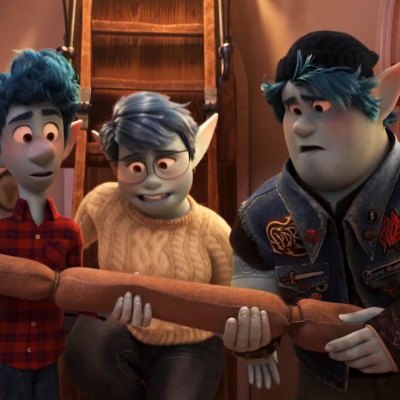Onward: The RPG and Gaming Easter Eggs in Pixar’s Latest
We dive into the easter eggs and references to tabletop gaming, RPGs, and trading cards in Pixar's Onward!
Pixar’s most recent release, Onward, is a celebration of brotherly love and family. It’s also a send-up of fantasy role playing games. In the story, brothers Ian and Barley (Tom Holland and Chris Pratt) must complete a quest in order to bring their late father back to life for a single day. While you don’t need to be a gamer to enjoy Onward, there are some delightful easter eggs inside the film for those of us familiar with tabletop role playing games, collectable card games, and specifically old school Dungeons & Dragons. Take a peek at what we noticed while watching!
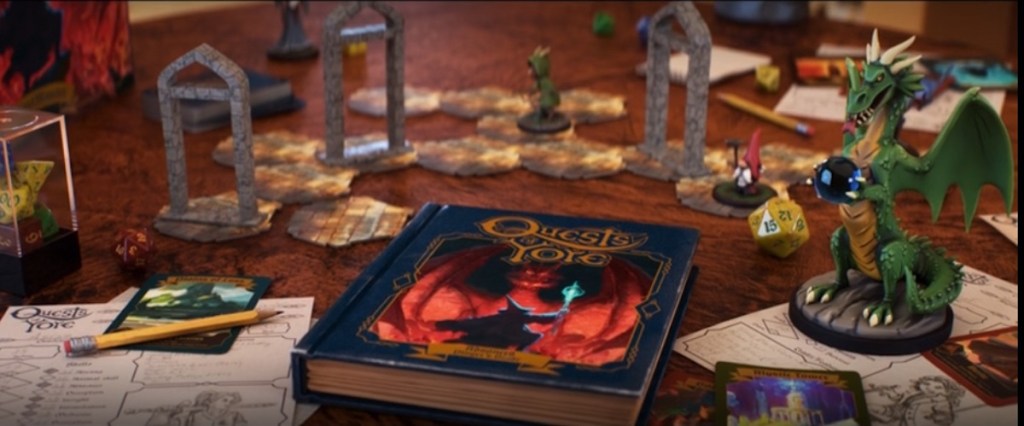
Quests of Yore
The first shot of Barley’s tabletop RPG campaign in Quests of Yore has all the hallmarks of an ongoing D&D campaign. Rule book on the table? Check. Character sheets with a character sketch and a box showing hit points? Check. Sharpened pencil? Check. Polyhedral dice (some even in a clear dice box, just like the ones carried by your friendly neighborhood gaming store), minis, map tiles, and even some cool 3D gateways? Check, check, check, and check. As the camera pans up, there’s even a cool game master’s screen.
Barley’s setup is, frankly, awesome… and familiar. The family’s dining room table is just the right size for having a group of gamers around. This is the type of table gamers pine after and seldom, when we’re adults with homes of our own, have the time and space to recreate. Not when we’re worried about folded laundry on the game table or, you know, dinner.
Gamer vs. Non-Gamer
Ian and Barley are both familiar people to gamers: one just doesn’t get why games are important, and not just kid stuff. The other? Well, he’s us (but more about that later).
The dichotomy between “He’s got to learn to clean up his toys” and “Doth my brother dare disrupt an active campaign?” is one that’s completely familiar to those of us who game—especially when we live with someone who doesn’t. The thing non-gamers tend not to understand about tabletop role playing is that all of the pieces represent part in a much larger story. While it’s possible to pick up where you left off, it’s like expecting everyone in your book group to have the same bookmark on the same page of the same edition of a book… when the book is only partially written and half your table has an illustrated edition.
In an ideal situation, every session of a tabletop role playing game comes to a conclusion where you can pick up all the pieces and put them away until next time. But there are those games that go late into the night, and those like a personal experience where it’s a relief when your character dies, because that means you can go take a nap. When you have outside pressures that require you to get up early—and a gorgeous table where you can leave out all the pieces—well, it makes perfect sense to me that Barley would want to keep things exactly as they are.

As a mom who has plenty of experience with Legos being left on the floor because they’re a part of an “active game,” I can tell you that I also acknowledge Ian’s frustration.
It’s Historically Based Role-Playing
When Barley’s trying to justify his love of Quests of Yore, he points out that the game is based in history. This is important to the plot of the story—but it could also be a nod to the founders of Dungeons & Dragons. The game was designed by Gary Gygax and Dave Arneson, published by Gygax’s company TSR: Tactical Studies Rules. While obviously the game was rooted in fantasy from its naming, it didn’t come out of thin air.
Gygax and Arneson were both wargamers, and both had experience in playing and designing strategy games that simulated battle. In miniature wargames, players enact battles on a map, setting one army of miniatures against another. Before Gygax worked on Dungeons & Dragons, he helped develop Chainmail, a medieval miniatures wargame.
Thus the early inspiration for Dungeons & Dragons was based not in magic and fantasy, or even players controlling single characters, but in historically based battle games.
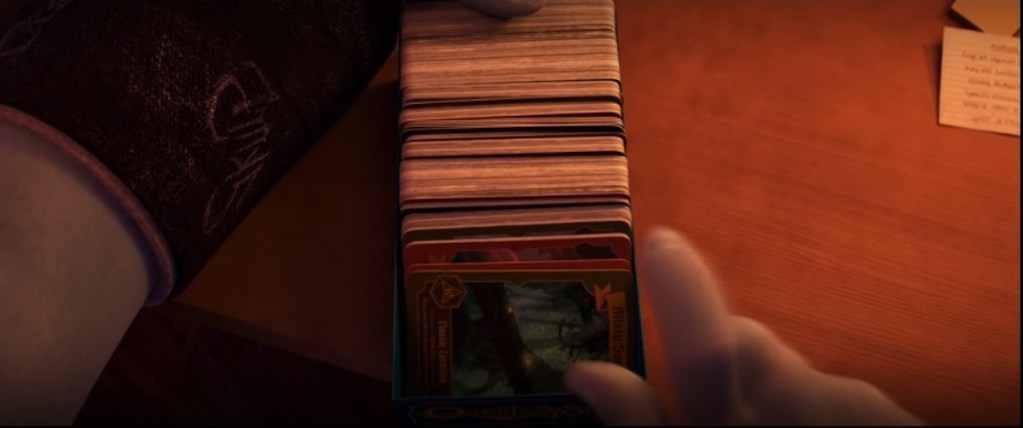
Collectable Card Games
Quests of Yore isn’t only based on D&D; from the first shot of the game, we can see that there’s a card component (and I admit, I’m totally curious about how that mechanic works). When Barley realizes they need another Phoenix Gem to complete the spell that will bring back their father, he grabs a huge box of cards and flips through them like a pro until he finds the two that represent the quest object and the location they need.
This collection is incredibly reminiscent of collectable card games, like Magic the Gathering, Pokémon, and the World of Warcraft Trading Card Game. Players start with a base deck, but they add cards to it, either by trading (or winning) them from fellow players, or by purchasing booster packs with random cards inside. Some cards are incredibly powerful, but finding them in a booster pack could take a lot of patience and purchasing power. While I only ever briefly played Magic the Gathering as a kid, I recognize the card style: title, art, and stats that let you know how much it costs to play a card and what it does when you play it. I’d be willing to bet that if an experienced Magic player had the patience to follow Barley’s fingers as he flips through those cards, you’d see some extra Easter eggs specifically for MTG players.
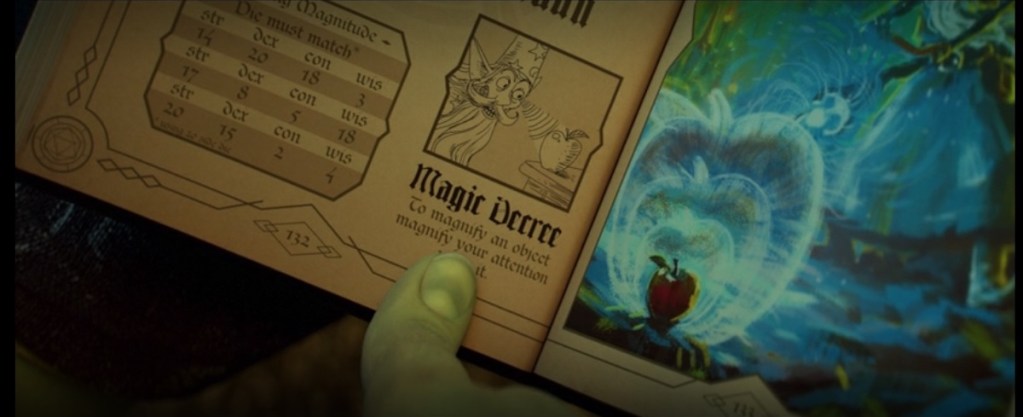
The Rules Lawyer
As the quest progresses, we get an even clearer idea of what kind of player (and probably game master) Barley is. Tabletop players have all played with Barley in one incarnation or another: he’s the rules lawyer. He’s that player who knows the rule book forward and backward. Sometimes that’s a great resource, especially for players who are more focused on the roleplay than the rules. When someone wants to know how grappling works for the 15th time, it’s great to have a rules lawyer at the table.
However, this is also the kind of person to most likely call everyone else out for “doing it wrong.” This can be particularly frustrating for a game master who’s trying to tell a good story—or who feels like the players are getting away with too much. The rules lawyer can sidetrack a whole conversation by arguing over a rules interpretation, leaving the rest of the table to go order a second pizza until the call is resolved. They can also insist you’re not playing your character correctly, especially if you’re playing a game with alignment.
Barley shows both sides of the rules lawyer: he insists that if centaurs and pixies only knew what their ancestors did, they’d have better lives (run faster, fly with their vestigial wings). They’re just playing their characters wrong! Since Ian is the only brother with a talent for magic, Barley is eager to share his knowledge in the most nitpicky way: “Sorry, it’s just your stance is… here. Chin up, elbows out, feet apart, back slightly arched.”
But he also shows how advantageous it is when someone knows all the rules. He knows the spell components—heart’s fire, spell decree, focus, and trust—and when all of them are required for one spell. He knows that a quest never follows the easy path. And he knows that you have to use what you’ve got available when you don’t have the right tools. Barley thinks outside the box, and he celebrates when Ian thinks outside the box and uses his creativity too.
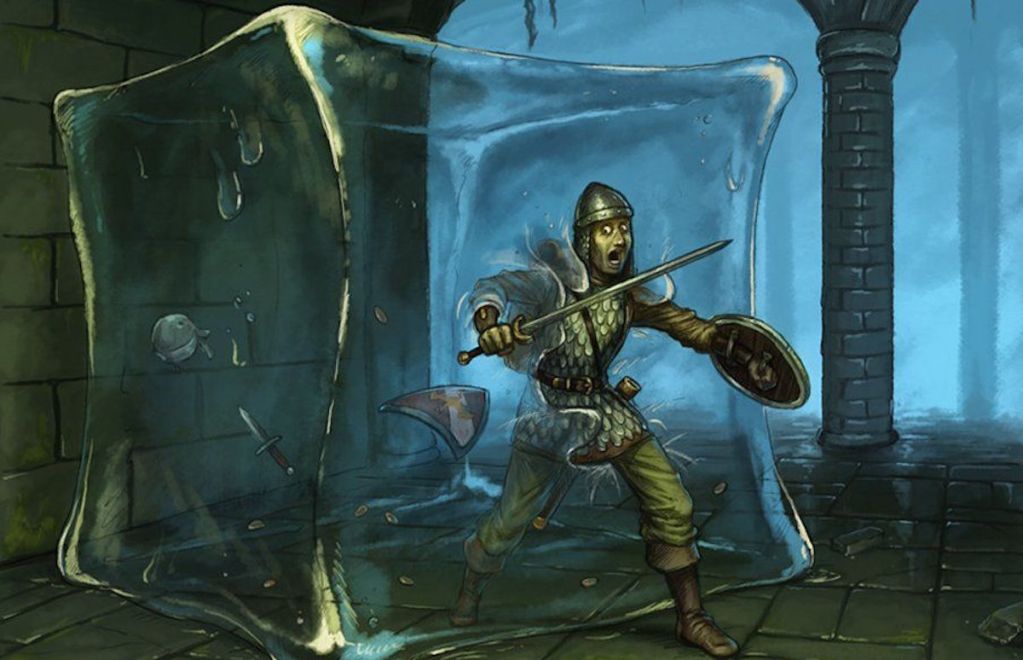
Gelatinous Cube
The gelatinous cube is a Chekovian gun that gets mentioned early on in the film, and appears on the screen at a pivotal moment. In Barley’s words, “It’s a giant green cube that instantly disintegrates all that it touches.” What non-gamers might not know is that the gelatinous cube has been around since the original Dungeons & Dragons White Box set was published in 1974. This is one classic monster, and while higher level adventurers don’t find it nearly as scary as it is in the film, it’s great to see it get a nod.
Critical Fumbles and Wild Magic
All gamers have had that moment when, on a 20-sided die, they roll a one, the lowest possible score, which can mean not only a failure, but a failure with disastrous consequences. When it comes to magic, those consequences can be even worse. When Ian fails a growth spell, he catastrophically shrinks Barley to miniature size. This is similar to wild magic rules, where a critical fumble on a roll can have a random blowback on the whole table. (It’s why a lot of gamers hear the words “wild magic” and shudder.)
Use What You Have
One of the most important skills I ever learned from playing role playing games is improvising. Looking around and using what’s there is a hugely critical skill in the film—and it’s also one that makes gaming better. Being able to share your imagination with your friends, and find ways to “yes and” each other’s stories, using what everyone brings to the table, is a key to successful gaming. And it’s a joy to see it so brilliantly celebrated in Onward.
What Easter eggs did we miss? Tell us in the comments!


